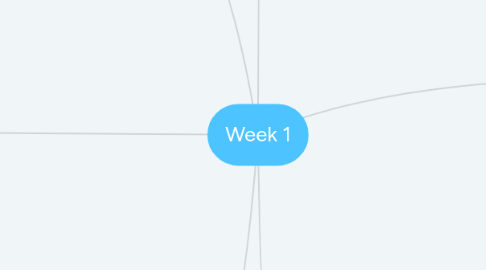Week 1
Brittany Lawlerにより

1. Is your definition of mathematics a result of your experiences with the subject? Will your definition determine how you will approach the teaching of mathematics?
1.1. My definition of mathematics is based off the idea that math is in everything and that it is needed in all day to day life.
1.2. The definition is a reflection on my love and understanding of mathematics.
1.3. I will approach mathematic teaching in a fun and positive manner.
1.4. Showing that learning math and all its wonders is fun but also important.
2. If mathematics was a food what would it be? What are your attitudes and beliefs about mathematics? Are they positive or negative? WHY?? Do our personal attitudes impact the way we teach mathematics (or facilitate the learning of mathematics) as teachers?
2.1. To me it would be chocolate
2.2. Why? Something that most people like and enjoy until they have too much of it.
2.3. Most students like math until they have to do it for a long period of time and over and over. Math is great and fun until your brain starts to hurt and then it gets unbearable to continue.
2.4. When I approach teaching mathematics I will approach it like chocolate. Small bits at a time so it’s not an overload and all will still enjoy it when it comes around again.
3. Difference between a mathematic concept and a mathematic skill
3.1. Concept is basically learning how to do something in general, a person who knows how to perform an operation has the idea, he or she understands how a particular operation can be done and can explain it to others.
3.2. Skills are actions. People do it. Individuals learn math skills the same way they learn artistic ability or athletic abilities. They willingly, correctly and frequently practise the actions and steps. They may even go to a special place where they can practise the skill.
4. What does the word “mathematics” mean to you?
4.1. When hear the word mathematics I think of the symbols that represent math.
4.2. The equals sign = The adding sign + the subtraction sign – and many more.
4.3. I also think of numbers, money and what we need mathematics for.
4.4. Its purpose and how we use it in everyday life, such as figuring out money to pay for things, finding out if something will fit in a space and much more.
5. What is your definition of mathematics?
5.1. Mathematics is the science that deals with the logic of shape, quantity and arrangement.
5.2. Math is all around us, in everything we do.
6. Describe the thinking strategies a child might use to work out: (8 + 3), (8 + 4), (5 + 5), (22 + 20), (25 + 24), (109 + 15)
6.1. Some children many use the counting strategy from some of these problems. Counting up from 8 by three numbers: 9, 10, 11. Answer is 11.
6.2. Others might need the problem to be written in a sentence: Emma has 8 apples and Joe has 3, how many apples do they have together.
6.3. Others might use a different strategy by making the biggest number into a bigger or smaller number. Example (8 + 4) make 8 into a 10. How? By adding 2. But we need to add 4, right? Take the 2 we have already added to the 8 and make it 10 + 2 = 12
6.4. Or for the bigger problems students many use a table to solve the problem, makes it more simple to add small numbers together.


